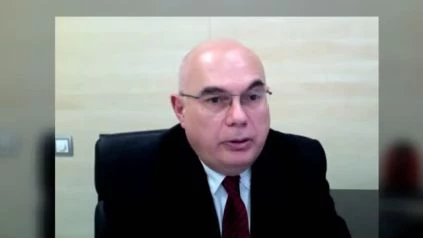Josep Tabernero, MD, PhD, Head of Medical Oncology at Vall d’Hebron Barcelona Hospital, and Director, Vall d’Hebron Institute of Oncology (VHIO) discusses Trifluridine/tipiracil outcomes in third- or later lines versus placebo in metastatic gastric cancer treatment: An exploratory subgroup analyses from the TAGS study (Phase3).
Context:
Metastatic gastroesophageal cancer (GC/GEJC) is a poorly prognosed and aggressive disease with a median overall survival (mOS) of around 1 year. Although new therapies have appeared, given the heterogeneity of the disease, the need for a deeper understanding of biology and patient profiling is important. Previously, in strongly pretreated metastatic GC/GEJC patients with a 31 percent risk reduction in death, the TAGS analysis reported an increased OS with trifluridine/tipiracil (FTD/TPI) vs placebo. The purpose of this exploratory subgroup study of TAGS is to examine the effectiveness, protection, and quality of life (QoL) results observed in patients who received third-line FTD/TPI or placebo (3L) and those who received third-line FTD/TPI (4L+). This study would help to provide physicians with a better picture of what is anticipated in terms of results in the third-line setting and to confirm the effectiveness of FTD/TPI later on.
Methodology:
Patients were divided into two groups: I patients who received either FTD/TPI or a placebo after two previous systemic therapy lines (3L) (n = 126 vs 64); and (ii) patients who received either FTD/TPI or placebo (n = 211 vs 106) after three or more previous systemic therapy lines (4L+). In these two classes, patient demographics/baseline characteristics, efficacy (OS, progression-free survival [PFS], and ECOG deterioration period to 2 or more), protection, and QoL were evaluated accordingly.
Outcomes:
Patient baseline attributes were well balanced between FTD/TPI and placebo in both classes. The mOS was 6.8 vs. 3.2 months for FTD/TPI vs. placebo in 3L (HR, 0.67; 95 percent CI, 0.47-0.97; P= 0.0318); while it was 5.2 vs. 3.7 months in 4L+ (HR, 0.72; 95 percent CI, 0.55-0.95; P= 0.0192). The mPFS was 3.1 vs 1.9 months for FTD/TPI vs placebo in 3L (HR, 0.54; 95 percent CI, 0.38-0.77; P= 0.0004); while it was 1.9 vs 1.8 months in 4L+ (HR, 0.57; 95 percent CI, 0.44-0.74; P< 0.0001). The period for ECOG degradation to 2 or more for 3L FTD/TPI vs placebo was 4.8 vs 2.0 months (HR, 0.60; 95% CI, 0.42-0.86; P= 0.0049); while 4.0 vs 2.5 months for 4L+ (HR, 0.75; 95% CI, 0.57-0.98; P= 0.0329). In the overall sample population, no significant clinical variations were observed in the effect on QoL. Through all subgroup analyses, the safety profile of FTD/TPI remained consistent.
Findings: Conclusions:
This study demonstrates the effectiveness and protection of the third and later lines of the use of FTD/TPI vs. placebo in GC/GEJC patients with a survival advantage that appears to be marginally superior in 3L. In both 3L and 4L+, the findings of QoL were consistent with previously reported subgroup studies and with the general population of the TAGS sample. Physicians should expect to provide their patients with an mOS of 6.8 and mPFS of 3.1 months when FTD/TPI is taken in 3L as recommended in the international guidelines. Data on clinical trials: NCT02500043

